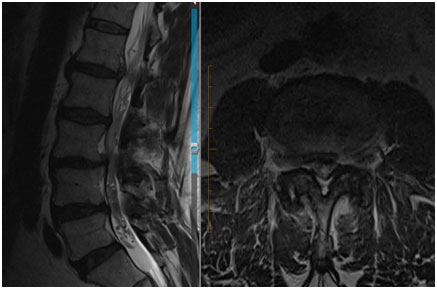Lumbar Decompression Laminectomy
Lumbar laminectomy, also known as decompression laminectomy, is a common surgery performed to relieve pressure on the spinal nerve(s) in the lumbar (lower back) region.Historically, the operation dates back to the 1820s, but the technique has been refined to a much smaller incision. A single level laminectomy can be achieved through a midline 3-4 cm incision with a traditional open procedure, or through a 2-2.5 cm incision using tubular retractors. More recently, endoscopic techniques have been developed with incisions as small as 5-7 mm
The term laminectomy originated from the Latin word ‘lamina’ refers to a thin plate and the word ‘ectomy’ means removal. The purpose of laminectomy is removal of the lamina or roof of the vertebra so as to provide enough space for the nerves to exit the spinal canal (decompression).

Indication
This common procedure
- Central canal stenosis
- Lateral recess stenosis
- Large disc herniations
Procedure
Lumbar laminectomy is usually performed under general anaesthesia. In this technique, the patient lies face down on the operating table. A small incision is made along the midline of the back. To have a clear view of the spine, the surgeon slowly retracts the soft tissues and muscles. A part of or the entire lamina is removed to eliminate the pressure on the nerve roots. In addition, other sources of compression such as thickened ligaments, synovial cysts, bone spur or herniated disc is removed to relieve the symptoms. At the end of the procedure, the surgeon realigns the soft tissues and the incision is closed with a suction drain left in the muscle layer for 24 hours.
Benefits of microdiscectomy include:
- Rapid relief of nerve pain (partial or complete) of the affected leg (within a few days)
- Faster recovery of muscle weakness (partial or complete) of the affected leg (within a few weeks)
- Slower recovery of numbness (partial or complete) of the affected leg (within a few months)
- Any pre-surgery back pain may not improve
- Minimal postoperative pain and discomfort
Risks or Complications
- Recovery from pain, weakness and numbness may not be complete
- Nerve injury resulting in new pain, weakness and numbness
- Spinal Fluid (CSF) leak from dural tear
- Infection, superficial or deep
- Any pre-surgery back pain may not improve
- New back pain may result in a very small number of patients




